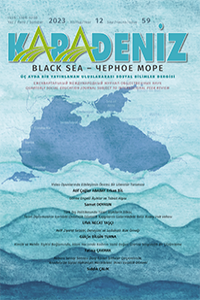İRAN'DAKİ SİYASİ AYAKLANMALARIN COĞRAFİ YÖNLER BAĞLAMINDA İNCELENMESİ
ANALYSIS OF POLITICAL UPRISINGS IN IRAN IN THE CONTEXT OF GEOGRAPHICAL ASPECTS
Author(s): Ghadir Golkarian, Zohreh HEIDARIBENISubject(s): Political history
Published by: Kültür Ajans Tanıtım ve Organizasyon
Keywords: Revolutions in Iran; geography of spatial behavior; climate; political actions;
Summary/Abstract: The influence of some factors on human behavior is inevitable. In this context, the effect of geographical factors has been the research area of thinkers, sociocultural and socio-psychological researchers since ancient times. Living conditions, environment, nature, and other factors have influenced human actions and become the main source of many trends. In the 5th century BC, Hippocrates and his followers postulated the influence of duality and geographical conditions on human habits, morals, and physiology. Iran, where four seasons are experienced, is also a multi-ethnic country. Therefore, the impact of climatic and geographical factors on the realization of political events, revolutionary tendencies and protests that have manifested themselves in Iran's political arena for about 2 centuries is remarkable. Considering its geographical structure, Iran is a complete crossroads. For this reason, it has become the center of attacks, military wars, and cultural encounters, has undergone both ethnic and religious changes over the years, and has been exposed to many external influences. Therefore, Iran is considered a multi-ethnic country with different demographics. Thus, the biological and geographical diversity that gave rise to social diversity gave different and unique identities to the communities in different geographical regions.
Journal: Karadeniz Uluslararası Bilimsel Dergi
- Issue Year: 2023
- Issue No: 59
- Page Range: 112-133
- Page Count: 22
- Language: Turkish

